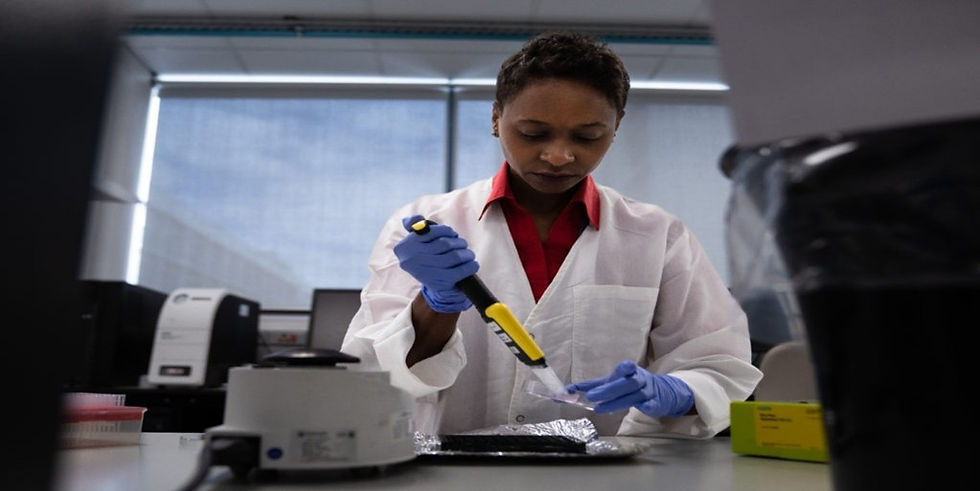Cyber Attacks on Lab-Grown Organs: Securing Bioprinting Infrastructure
- Shilpi Mondal

- Aug 9
- 4 min read
SHILPI MONDAL| DATE: JULY 30,2025

Introduction
The field of 3D bioprinting is revolutionizing medicine, offering the potential to create lab-grown organs, tissues, and implants tailored to individual patients. However, as this technology advances, so do the cybersecurity risks associated with it. Cyberattacks on bioprinting infrastructure could compromise patient safety, intellectual property, and even national security.
This article explores the emerging threats to bioprinting systems, the potential consequences of cyber intrusions, and the strategies needed to secure this critical biomedical infrastructure.
The Rise of Bioprinting and Its Cyber Vulnerabilities

What is 3D Bioprinting?
3D bioprinting merges layer-by-layer fabrication techniques with biological materials to engineer living tissues and organs. Using bioinks—mixtures of cells, growth factors, and biomaterials—bioprinters construct complex biological structures layer by layer. Applications include:
Organ transplants (e.g., kidneys, hearts)
Drug testing models (reducing animal testing)
Personalized implants (e.g., bone grafts, skin for burn victims).
Why is Bioprinting a Cybersecurity Target?
Bioprinting relies on digital workflows, including:
Medical imaging (MRI, CT scans converted into 3D models)
Automated printing systems (controlled via networked software)
Cloud-based data storage (patient-specific genetic and biological data).
These digital touchpoints create entry points for hackers, who could:
Alter organ designs (leading to faulty implants)
Steal proprietary bioink formulas (valuable intellectual property)
Disrupt biomanufacturing (delaying life-saving treatments).
Potential Cyber Threats to Bioprinting Infrastructure
Data Manipulation in Digital Models
Hackers could modify 3D organ blueprints, leading to malformed tissues or non-functional organs.
Example: A manipulated heart valve design could cause fatal complications post-transplant.

Ransomware Attacks on Bioprinting Facilities
Cybercriminals could encrypt critical bioprinting files, demanding ransom to restore access.
In 2021, a ransomware attack on South Africa’s National Health Laboratory Service paralyzed medical testing, showing how healthcare systems are vulnerable.
Theft of Sensitive Biological Data
Patient genomic data stored in bioprinting databases could be stolen and sold on the dark web.
In 2020, a cyberattack on Miltenyi Biotec disrupted COVID-19 research, highlighting risks to biomedical data.
Sabotage of Bioprinting Equipment
Attackers could remotely alter printer settings, causing:
Overheating (killing live cells in bioinks)
Incorrect dosing (toxic chemical releases)
Mechanical failures (ruining expensive bioprinted constructs).
Case Studies: Real-World Cyber Incidents in Biotech
The 2017 NotPetya Attack on Merck
A Russian-linked malware attack disrupted Merck’s vaccine production, causing shortages of Hepatitis B and HPV vaccines.
Similar attacks could target bioprinting facilities, delaying organ production.
DNA-Based Malware in Synthetic Biology
Researchers demonstrated that malware could be encoded into synthetic DNA, potentially corrupting genetic databases used in bioprinting.
Cyber Intrusions in Medical IoT Devices
Insulin pumps and pacemakers have been hacked to deliver lethal drug doses or electric shocks—raising concerns about bioprinted organ control systems.
Securing Bioprinting Infrastructure: Best Practices
Implementing Zero-Trust Architecture
Strict access controls for bioprinting software and databases.
Multi-factor authentication (MFA) for all personnel.
Encrypting Biological Data
End-to-end encryption for patient genomic data and organ blueprints.
Blockchain-based verification to prevent tampering with digital models.
Air-Gapping Critical Systems
Disconnecting bioprinters from the internet when handling sensitive designs.
Using standalone servers for proprietary bioink formulations.
Regular Cybersecurity Audits
Penetration testing to identify vulnerabilities.
AI-driven anomaly detection to spot unusual activity in bioprinting workflows.
International Collaboration on Cyberbiosecurity
The WHO’s updated biosecurity guidelines (2024) emphasize cyber threats in high-containment labs, urging global cooperation.
The Future: Ethical and Regulatory Challenges
Who Owns a Bioprinted Organ?
Legal ambiguity exists over intellectual property rights for bioprinted tissues.
Should patients have full control over their 3D-printed organs, or do companies retain rights?
Preventing Bioprinting Cyber Warfare
Nations could weaponize cyber attacks on bioprinting labs to disrupt medical supply chains.
The U.S. Cyber-Biosecurity Nexus report warns of state-sponsored hacking in synthetic biology.
Standardizing Security in Bioprinting
The EU’s 2025 standardization workshop aims to establish cybersecurity protocols for bioprinting.
Conclusion
As 3D bioprinting advances, so must its cybersecurity defenses. The stakes are high—compromised organs, stolen genetic data, and disrupted medical research could have life-or-death consequences. By adopting zero-trust frameworks, encryption, and international regulations, the biotech industry can safeguard this groundbreaking technology.
The future of medicine depends not just on printing organs, but on protecting them from cyber threats.
Citations:
Crawford, E., Bobrow, A., Sun, L., Joshi, S., Vijayan, V., Blacksell, S., Venugopalan, G., & Tensmeyer, N. (2023). Cyberbiosecurity in high-containment laboratories. Frontiers in Bioengineering and Biotechnology, 11. https://doi.org/10.3389/fbioe.2023.1240281
Kantaros, A., Ganetsos, T., Petrescu, F. I. T., & Alysandratou, E. (2025). Bioprinting and intellectual property: challenges, opportunities, and the road ahead. Bioengineering, 12(1), 76. https://doi.org/10.3390/bioengineering12010076
Isichei, J. C., Khorsandroo, S., & Desai, S. (2023). Cybersecurity and privacy in smart bioprinting. Bioprinting, 36, e00321. https://doi.org/10.1016/j.bprint.2023.e00321
Kirillova, A., Bushev, S., Abubakirov, A., & Sukikh, G. (2020). Bioethical and legal issues in 3D bioprinting. International Journal of Bioprinting, 6(3), 272. https://doi.org/10.18063/ijb.v6i3.272
Stawiska, Z. (2024, July 11). Biosecurity guide warns of risks from AI, cyber-attacks and amateur experiments - Health Policy Watch. Health Policy Watch. https://healthpolicy-watch.news/biosecurity-guide-warns-of-risks-from-ai-cyber-attacks-and-amateur-experiments/
Katanani, A. (2025, February 8). 3D bioprinting in 2025: What medical device makers need to know now. Diasurge Medical. https://diasurgemed.com/ng/3d-bioprinting-in-2025-what-medical-device-makers-need-to-know-now/
Wisnieski, A. (2021, December 14). 3D Bioprinting: an Ethical Analysis - Computers and Society @ Bucknell - Medium. Medium. https://medium.com/computers-and-society-bucknell/3d-bioprinting-an-ethical-analysis-27046691ffc2
Image Citations:
Terry, M. (2022, February 25). Lab grown Organs: One step closer to reality. BioSpace. https://www.biospace.com/another-step-closer-to-realistic-organs-grown-in-a-lab
Katanani, A. (2025, February 8). 3D bioprinting in 2025: What medical device makers need to know now. Diasurge Medical. https://diasurgemed.com/ng/3d-bioprinting-in-2025-what-medical-device-makers-need-to-know-now/
Stawiska, Z. (2024, July 11). Biosecurity guide warns of risks from AI, cyber-attacks and amateur experiments - Health Policy Watch. Health Policy Watch. https://healthpolicy-watch.news/biosecurity-guide-warns-of-risks-from-ai-cyber-attacks-and-amateur-experiments/
Wisnieski, A. (2021, December 14). 3D Bioprinting: an Ethical Analysis - Computers and Society @ Bucknell - Medium. Medium. https://medium.com/computers-and-society-bucknell/3d-bioprinting-an-ethical-analysis-27046691ffc2




Comments